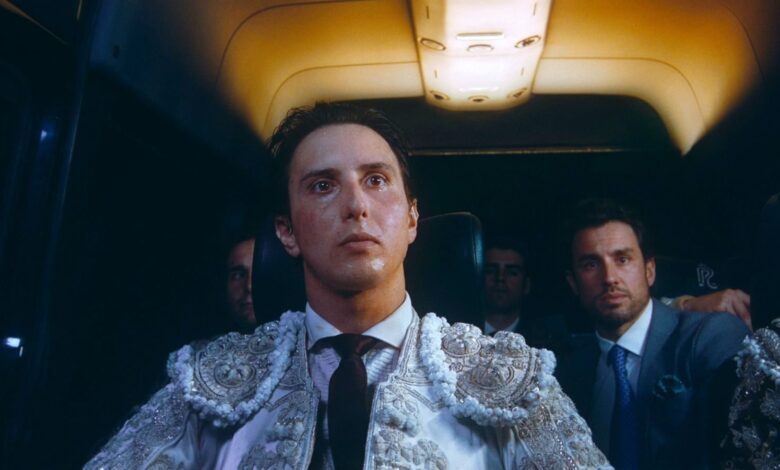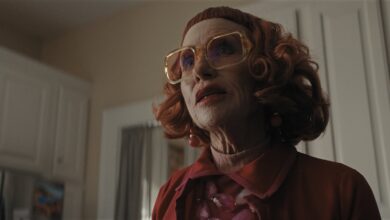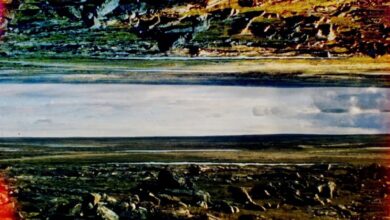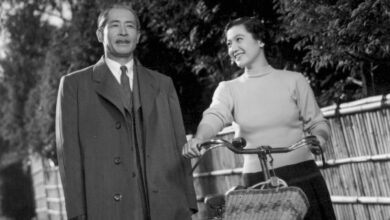
This article appeared in the June 27, 2025 edition of The Film Comment Letter, our free weekly newsletter featuring original film criticism and writing. Sign up for the Letter here.

Afternoons of Solitude (Albert Serra, 2024)
“The sun is the best bullfighter,” wrote Ernest Hemingway, “and without the sun the best bullfighter is not there. He is like a man without a shadow.” In Albert Serra’s Afternoons of Solitude (2024), one corrida notably takes place in the rain. Andrés Roca Rey, the Peruvian matador at the center of this fascinating and disturbing documentary, gets plenty of other opportunities to shine and glitter in his traje de luces, or “suit of lights,” a costume whose flamboyant delicacy feels like an alibi for the brutal violence its wearer inflicts in the bullring. Yet even when the sun is out, he remains a man who is in some sense not there. His vacant, almost innocent beauty is worthy of a hustler in a Warhol film, a surface free from any deep interior roil of desire or fear. He is as opaque and dumbly corporeal as the hefty beasts he torments, barely verbal, all puckered lips and arched postures. An entourage of hype men surrounds him, affirming his greatness and the large size of his testicles so incessantly that both matters seem urgently and perpetually in question. “I was a bit sad that he was not happy with the final result,” Serra told Paris Match of Roca Rey’s response to the movie. But this should not be surprising. Voiding all psychological interiority, Serra films Roca Rey as an animal among animals, a rhyme he makes clear by opening with a graphic match cut between two faces, positioned frontally at the center of the frame: a bovine visage, cloaked in darkness, and that of the toreador, sweaty and inscrutable.
Of course, a cut like this can equally mark out an opposition, and Afternoons of Solitude is a film that depicts an atavistic battle between man and animal in which death is the stake. It does so in an observational manner, unflinchingly presenting the stomach-churning savagery of tauromachy while refraining almost entirely from offering commentary on the controversial activity. Serra has long professed the belief, inherited from the historical avant-gardes, that the camera is able to reveal realms of visibility inaccessible to the eye alone. As such, Afternoons of Solitude makes no attempt to replicate the experience of attending a live corrida. Instead, it delivers an impossible proximity to the action, magnifying and fragmenting it in ways that oscillate between the transfixing and the intolerable. When writing about Pierre Braunberger and Myriam Borsoutsky’s Bullfight (1951), André Bazin had cause to note that the “framing of man and animal is never tighter than a medium shot or even an American [medium-long] shot.” By contrast, Serra and his director of photography Artur Tort exploit the affordances of digital cinematography to limit the field of vision radically, isolating moments and gestures to create tightly held images of great plastic sophistication.
In its fixation on Roca Rey, Afternoons of Solitude echoes Douglas Gordon and Philippe Parreno’s Zidane: A 21st Century Portrait (2006), which trained 17 cameras on the legendary footballer throughout a single match. Yet Serra extracts and abstracts from the continuum of reality even more dramatically than did Gordon and Parreno, breaking with their emphasis on real time. His film is marked by multiple acts of fastidious exclusion, reminding one of how fully the choices of what to show and how to show it comprise crucial authorial gestures within the observational mode, a kind of filmmaking so often misunderstood as merely duplicating reality. The film’s extreme closeness to the interspecies encounter transforms what was a mass gathering into an intimate confrontation with a hellacious spectacle. There is often nowhere else to look than at the bleeding wounds of a bull that has been agonizingly antagonized. Serra decisively bars the crowd from the frame, attenuating bullfighting’s connection to collectivity (and thus to a nationalistic significance) and depriving the spectator of a diegetic surrogate who might serve as a point of relay for the gaze. We can neither sneer at nor identify with the corrida enthusiasts, for Serra has abandoned any attempt to capture the experience of the live event and instead constructed a relation to the world that can be found only in cinema, complete with a musical score.
With his surrounding gang, Roca Rey is never entirely alone, even if he often seems to exist at a remove from everyone around him, save for the bull. The titular solitude might thus also be understood in relation to the dying animals, whose final moments figure as tragic caesuras within the film’s flow, or even to the viewer, who must face these scenes of balletic atrocity for themselves, with limited guidance. While the soundtrack lends some emotional color, any conclusions that one may draw about the practice of bullfighting occur in the absence of exposition. The structure and rules of the corrida are never explained. What makes a good or bad performance? Why does Roca Rey proudly hold up a bull’s severed ear at the end of a fight? This film will not tell you. Some audiences will come to the film already possessing this knowledge, but many will not; either way, the transmission of such understanding, so integral to the passing down of tradition, is a process in which Serra declines to participate. Rather than a narrative trajectory culminating in heroic glory or humiliating failure, repetition predominates. By restricting his film to three recurring settings—the bullring, the hotel, and the van that transports the Roca Rey posse between them—Serra conjures a feeling of infernal confinement within the looping temporality of ritual.
Does the fact that Afternoons of Solitude does not explicitly condemn bullfighting—which is banned in Serra’s native Catalonia and championed by extreme right-wing parties such as Vox as emblematic of the Spanish nation—mean that it affirms the cruel practice? It is not an overtly critical film, and it undeniably aestheticizes violence. But representation is not necessarily endorsement, and the bulls’ suffering is not intensified by being photographed. It exists, and Serra shows it to us. There is beauty in this, yes, but nothing that dulls a serious reckoning with horror; on the contrary. In this regard, Afternoons of Solitude is better compared to the paintings of Francis Bacon or Miriam Cahn than to Hollywood’s repulsively gratuitous indulgence in the disposability of bodies, human and animal. It would be wrong to suggest that the film empathizes with the animal in pain, but Serra’s choices are such that this empathy can arise in the spectator, along with outrage at the barbarism that calls itself civilization. Some will surely decide that they do not wish to subject themselves to these excruciating images. Those who do are promised the challenging, visceral experience of one of the year’s best films.
Erika Balsom is a reader in film studies at King’s College London and the co-editor of Feminist Worldmaking and the Moving Image (MIT Press, 2022).
Source link




